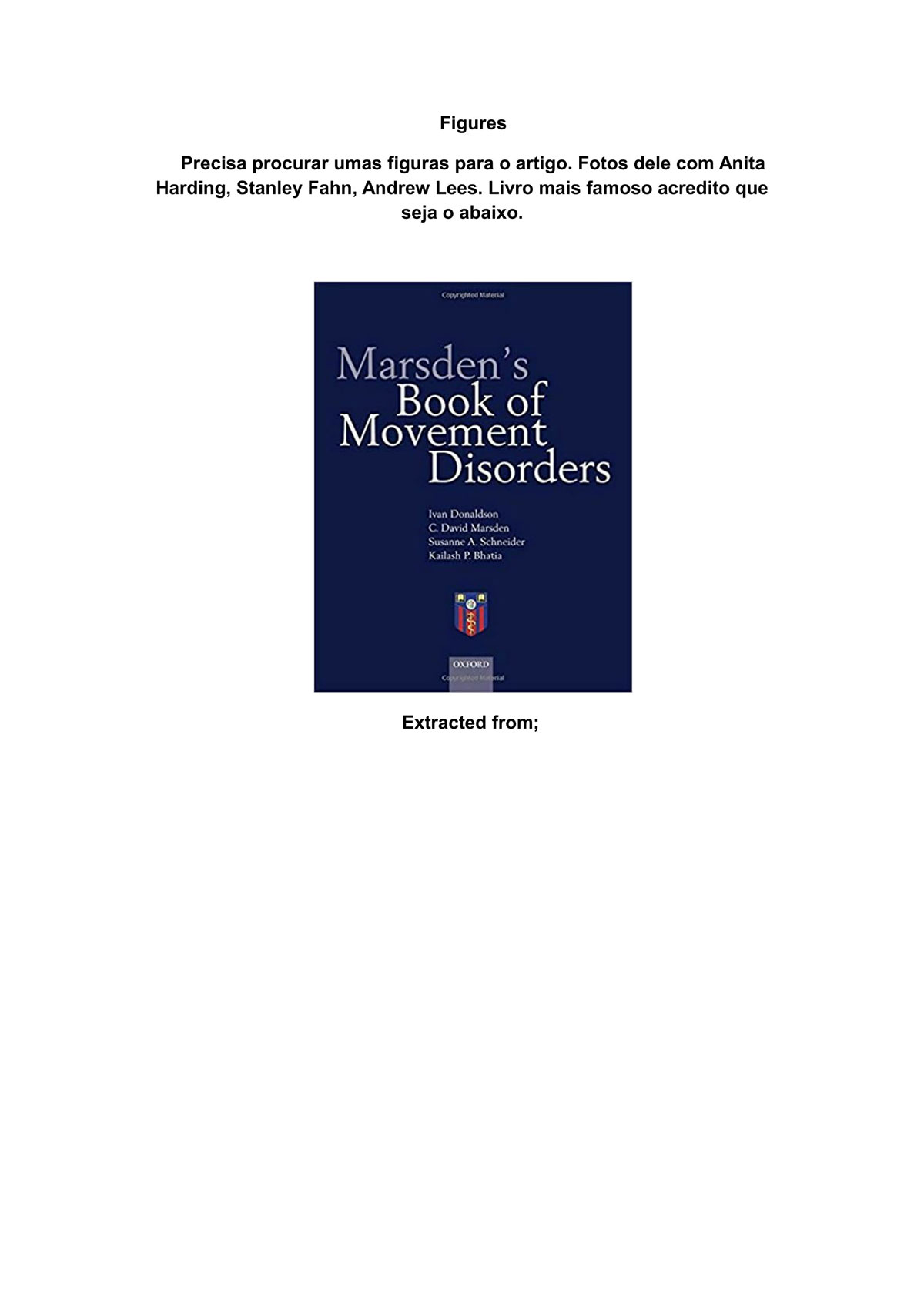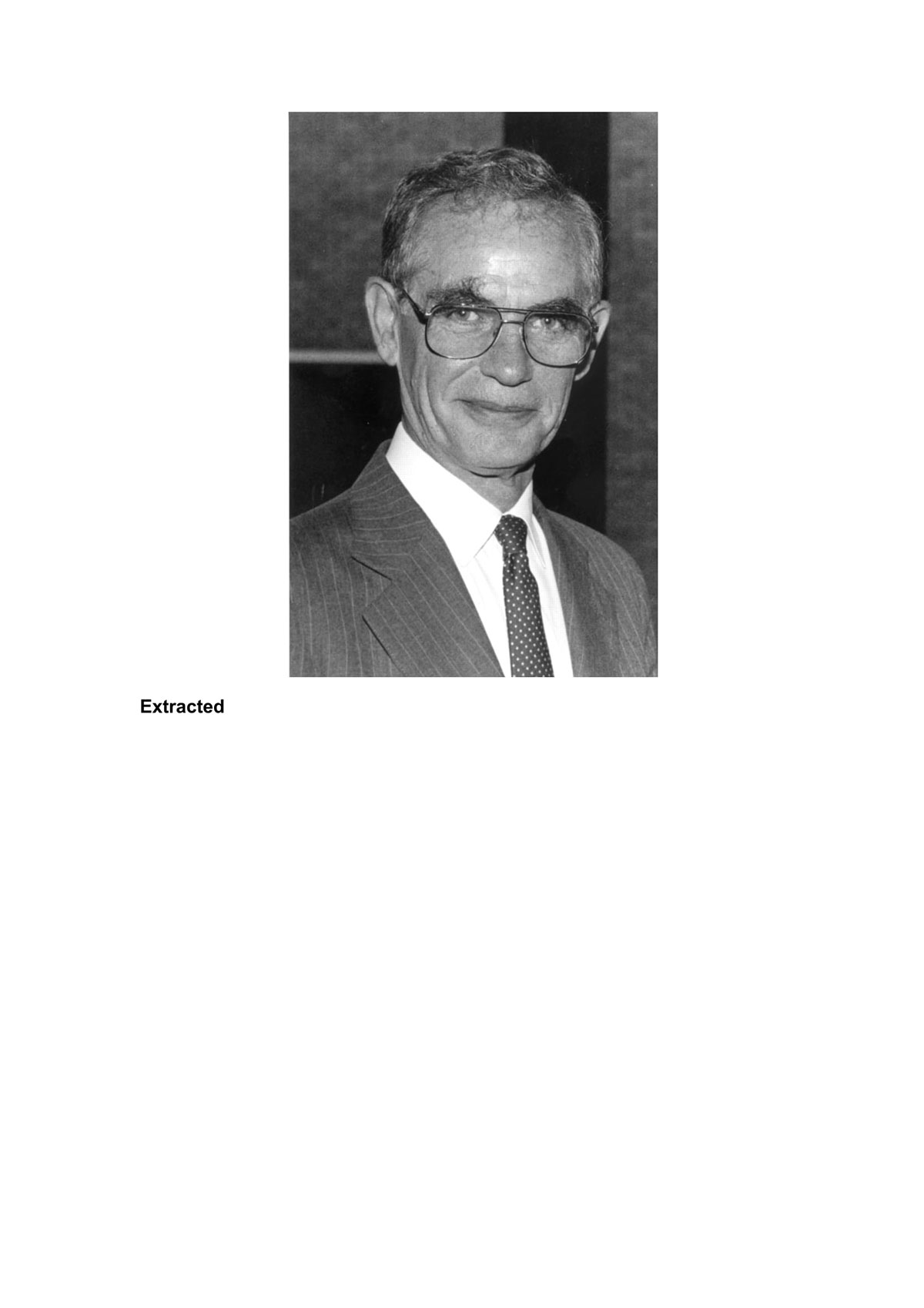Session Information
Date: Tuesday, September 24, 2019
Session Title: Education / History in Movement Disorders
Session Time: 1:45pm-3:15pm
Location: Agora 2 West, Level 2
Objective: The report provides material about David Marsden’s life and achievements in Neurology and specially in Movement Disorders field.
Background: Marsden obtained his Master’s degree (MSc) in 1960 with a thesis regarding the pigmentation of the substantia nigra, in 1963 qualified his Bachelor of Medicine degree (MBBS) and achieved his membership of Royal College of Physicians of the UK (MRCP) in 1965. In 1970, he was appointed senior lecturer in neurology at the Institute of Psychiatry and consultant neurologist to the Maudsley and King’s College Hospital. During a flight, David and Andrew Lees agreed to solve the scarcity of brain tissue for Parkinson’s disease research and created the Parkinson’s Disease Society Brain Bank of the United Kingdom. David Marsden’s research profile was extraordinary with 1368 publications. He coauthored more than 800 original papers, 200 books chapters and books, and over 60 invited reviews. He was the most frequently cited clinical neuroscientist and among the 10 most cited biomedical scientists in the world.
Method: The authors review David Marsden’s personal and profissional history, highlighting his contribution to the foundation of the Movement Disorders Society, as well as his discoveries in the movement disorders field, remembering the 20th anniversary of his death in 2018.
Results: In 1970, he was appointed senior lecturer in neurology at the Institute of Psychiatry and consultant neurologist to the Maudsley and King’s College Hospital. In addition, in 1972, at the surprising age of 34, he was the first appointee to the newly created Joint Chair of Clinical Neurology at King’s College Hospital Medical School and the Institute of Psychiatry. Afterwards, Marsden and David Parkes established a clinic for rare and puzzling movement disorders, a habit that would persist throughout Marsden’s career. Probably, Marsden’s most important collaboration was with Stanley Fahn, Houston Merritt Professor of Neurology at the Neurological Institute in Columbia Presbyterian Hospital in New York: the foundation of the Movement Disorders Society in 1985.
Conclusion: Charles David Marsden was a unique neurologist of the 20thcentury and left us with remarkable legacies such as extraordinary papers and world-renowned leaders in the field of movement disorders. Meanwhile it has passed 20 years, his contributions remain important for those who are involved in the MD field.
References: 1. Quinn, N., Rothwell, J. & Jenner, P. Charles David Marsden. 15 April 1938 — 29 September 1998. Biogr. Mem. Fellows R. Soc.58, 203–228 (2012). 2. Quinn, N. David Marsden 1938-1998. Adv. Clin. Neurosci. Rehabil.10, 20–22 (2010). 3. Lees, A. J. In Memoriam C. David Marsden. Mov. Disord.14, 3–5 (199AD). 4. Fahn, S. Obituary Professor C. David Marsden. Arch. Neurol.56, 119–120 (1999). 5. Lang, A. E. In Memoriam: Professor Charles David Marsden. Neurology52, 14–15 (1999). 6. BROOKS, D. J. Professor C David Marsden 1938-98. J. Neurol. Neurosurg. Psychiatry66, 2–2 (1999). 7. Simpson, B. A. Professor charles david marsden (1938-98): an appreciation. Neuromodulation2, 149 (1999). 8. Rothwell, J. C., Traub, M. M. & Marsden, C. D. Primary writing tremor. J. Neurol. Neurosurg. Psychiatry42, 1106–1114 (1979). 9. Sheehy, M. P. & Marsden, C. D. Writers ’ Cramp — a Focal Dystonia. Brain105, 461–480 (1982). 10. Dressler, D., Thompson, P. D., Gledhill, R. F. & Marsden, C. D. The syndrome of painful legs and moving toes – A case report. Mov. Disord.9, 13–21 (1994). 11. Atchison, P. R., Thompson, P. D., Frackowiak, R. S. J. & Marsden, C. D. The syndrome of gait ignition failure: A report of six cases. Mov. Disord.8, 285–292 (1993). 12. Marsden, C. D. & Parkes, J. D. ‘On-Off’ Effects in Patients With Parkinson’S Disease on Chronic Levodopa Therapy. Lancet307, 292–296 (1976). 13. Hallett, M., Chadwick, D., Adam, J. & Marsden, C. D. Reticular reflex myoclonus: a physiological typ of human post-hypoxic myoclonus. J. Neurol. Neurosurg. Psychiatry40, 253–264 (1977). 14. Fletcher, N. A. Review article The genetics of idiopathic torsion dystonia. J Med Genet27, 409–412 (1990). 15. Marsden, C. D. The mysterious motor function of the basal ganglia. Neurology32, 514 LP-514 (1982).
To cite this abstract in AMA style:
G. Froehner, L. Zubko, M. Pedro Franco, A. Meira, F. Germinani, H. Teive. The legacy of Charles David Marsden: A role model in the field of movement disorders [abstract]. Mov Disord. 2019; 34 (suppl 2). https://www.mdsabstracts.org/abstract/the-legacy-of-charles-david-marsden-a-role-model-in-the-field-of-movement-disorders/. Accessed April 21, 2025.« Back to 2019 International Congress
MDS Abstracts - https://www.mdsabstracts.org/abstract/the-legacy-of-charles-david-marsden-a-role-model-in-the-field-of-movement-disorders/


